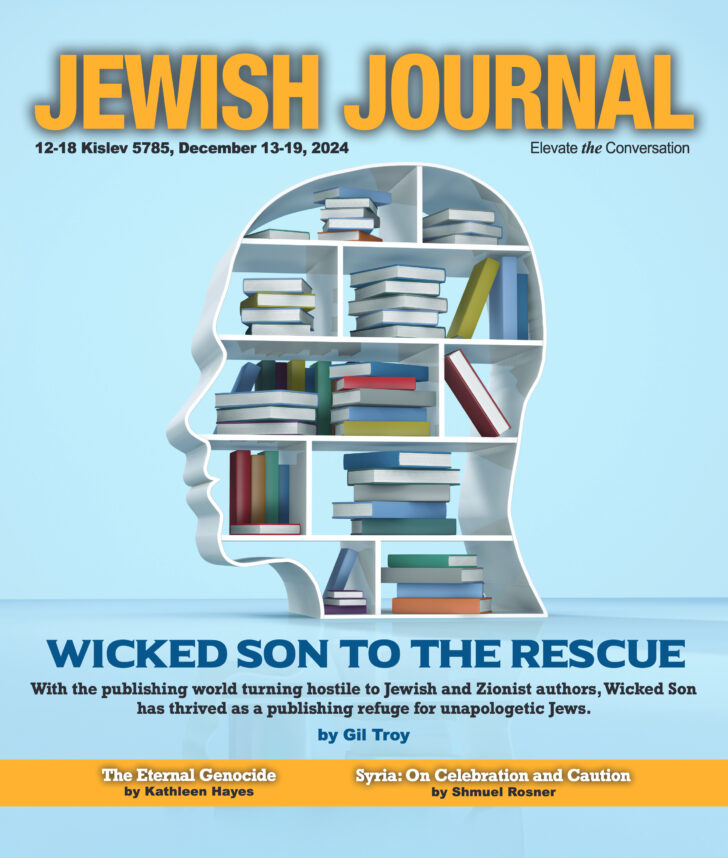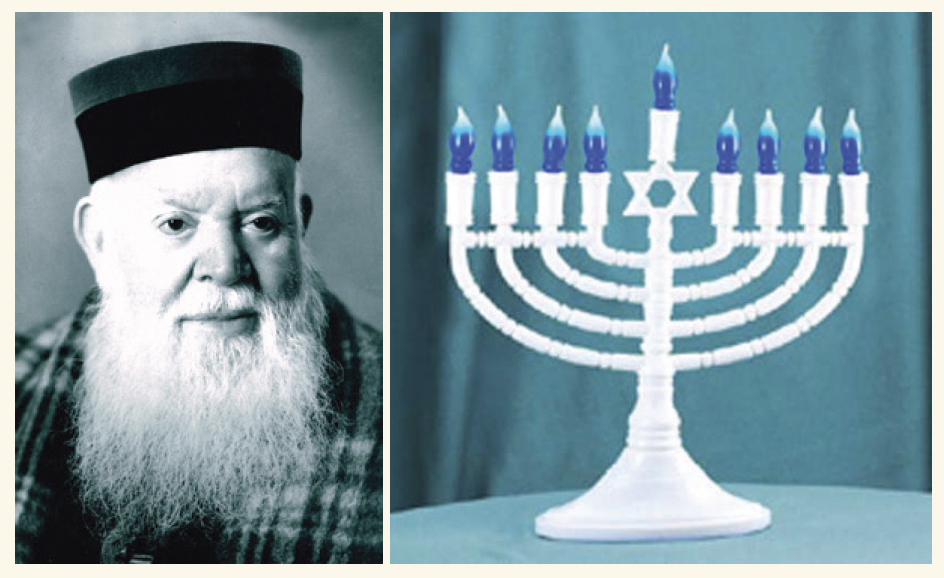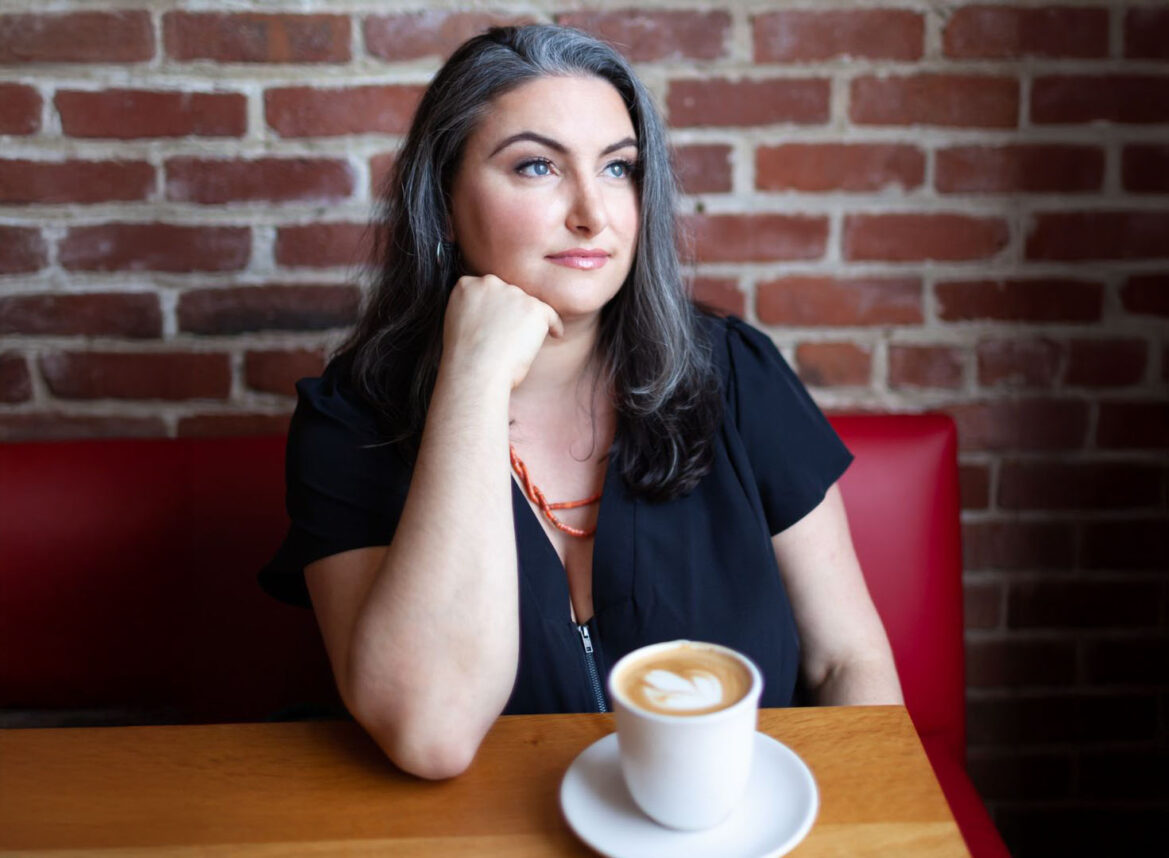“Jews: The Essence and Character of aPeople”
by Arthur Hertzberg and AronHirt-Manheimer (HarperSanFrancisco, $25)
Can one speak of a “national character”? Whileacknowledging that the practice has a pernicious side, Rabbi ArthurHertzberg, in his provocative, if mislabeled, new work, points outthat many books speak of national character and are readily acceptedand praised. For example, Luigi Barzini’s book on the Italians,numerous modern works on the nature of the Russian people, or workson the character of the Greek or Roman peoples in antiquity all seemharmless exercises in interpreting the culture of another. While itis true that plumbing the “Jewish character” is an enterprise thathas been twisted by malevolence, particularly in the last century,that does not mean that certain traits cannot be said to distinguishthe Jewish people throughout their history.
For Hertzberg, Judaism has been sustained by thetwin riverbanks of chosenness and anti-Semitism. Both arise from theconviction that God has designated a special mission for the Jewishpeople. Hertzberg does not say whether he believes this to be true;more important is that Jews act as if it were true. To act chosen isthe guarantor of survival, and of worth. To act chosen means tobelieve in the betterment of the world, to “take actions because theyare right, not because they bring personal comfort and materialgain.”
 ” WIDTH=216 HEIGHT=336 alt=”” ALIGN=bottom>
” WIDTH=216 HEIGHT=336 alt=”” ALIGN=bottom>
I offer this sketch because “Jews” is an almostpersonal book. Almost personal, as there are no deep revelations orcharacter analyses. Still, Hertzberg uses this book to schmooze abouthis experiences, his view of the world, his presumptions about theJewish future. This is a book in the manner of the table-talk booksof the 19th century, the sort of book Hazlitt, Landor or Holmes wouldpen if they took Jewish history as their métier. The chapters,co-written with Reform magazine editor Aron Hirt-Manheimer, trolllightly through Jewish history, with stories, sketches and anecdotesloosely linked to the theme of “the Jewish essence.” SinceHertzberg’s life has been so rich, there is substance as well ascharm to his backward glances.
Unfortunately, the book is being marketed assomething other than it is. The flap copy and advertising leads oneto imagine that “The Jews” is a sustained, focused meditation on thecharacter and destiny of Judaism. It is not. Evidence ofrigorlessness abounds: Midrash is quoted as history (indeed, thepassage about Abraham’s smashing his father’s idols, a midrashiclegend, is quoted twice, and pivotally); vast phenomena are sweptaside with a bromide (“We Jews know why we suffer. Society resentsanyone who challenges its fundamental beliefs, behavior, andprejudices.” “That Jews have a special destiny…is why so manyparents want their children to marry a Jew”); and there are even somemisstatements (Isaac Luria did not “invent tikkun olam .”)
Much of the book is taken up with thumbnailsketches of some fascinating personalities. There are familiar names– Benjamin Disraeli, Spinoza the Baal Shem Tov — as well as namesknown to the cognoscenti, such as Isaac De Pinto, Abraham Seneor andJacob Emden. A few of the biographies contribute to the overridingthemes, while others make an appearance because of their intrinsicimportance or interest, but without adding to the general thrust ofthe argument.
At the end of the book, Hertzberg makes apassionate plea for pluralism. Raised in an Orthodox home (his fatherwas a well-known Chassidic Rabbi), he is indignant at what he regardsas Orthodox triumphalism and rigidity: “The incontrovertible fact isthat all of the modern Jewish movement, the very ones from whichOrthodoxy proclaims it will save us, arose because in the course ofthe nineteenth and twentieth centuries Orthodoxy could not keep mostof its children within its ranks.” He also cites the surprisingstatistic yielded by an analysis of the 1990 population study that ofrespondents raised Orthodox, only 22 percent still identified withthat branch of Judaism. Of those raised Conservative, 57 percentstill identified as such, and in the case of Reform, the percentagewas 78.
These are provocative assertions. While they arenot argued at length, and do not flow seamlessly from the preceding,the bite of the provocateur outweighs any puzzlement at the exactfocus of the argument.
Hertzberg’s prescription for Jewish survival isnot new: engagement with texts, seriousness about tikkun olam,grappling with the presence and absence of God, permitting aplurality of serious voices to be heard without delegitimizingothers.
What makes these arguments worth reading is therange of reference, the authority of the writer, and the pungency ofthe tone.
This book should be read less for information –though, surely all who read it will learn — than for an encounterwith an original. Arthur Hertzberg is a deeply learned and passionateman, that rare historian who has abandoned the academic sideline fora place in the fray. Read with a pencil in hand, for thesereflections will engage and infuriate. In the end, however, like theman, they will both charm and enlighten.
David Wolpe is spiritual leader of SinaiTemple.
A Living Legacy
By Diane Arieff Zaga, Arts Editor
 </i></p>
<p><img SRC=) ” WIDTH=144 HEIGHT=208 alt=”” ALIGN=bottom>
” WIDTH=144 HEIGHT=208 alt=”” ALIGN=bottom>
Combining the lyrical sensibility of a poet withan historian’s disciplined and far-ranging curiosity, author ThomasCahill explores the nature of Judaism’s contributions to the worldwith freshness and an elegant sense of wonder. “The Gifts of theJews” follows Cahill’s best-selling “How the Irish SavedCivilization.” It is the second work in his “Hinges of History”series, which explores pivotal moments in the evolution of the humansensibility.
This is not history written as a rote series ofnatural and man-made disasters. It’s not a dry, footnote-ladenacademic exercise either. Cahill manages something perhaps moredifficult, and certainly more compelling: He places the spiritualjourney of biblical-era Jewry firmly in a historical context whilesimultaneously making them come alive in a way that is almost sensoryin its immediacy.
Cahill’s overarching goal with this book, and withthe entire series, is to examine the various important legacies ofvarious peoples at unique passages in time. Not surprisingly then,the author exults in the rich contributions of the first monotheists– flawed and human, but revolutionary, too. “The role of the Jews,the inventors of Western culture,” Cahill writes, “is singular; thereis simply no one else remotely like them…their worldview has becomeso much a part of us that at this point it might as well have beenwritten into our cells as a genetic code.”
Beginning with patriarch Abraham’s startlingjourney from Sumeria to Canaan, and continuing on through theBabylonian exile, the author delves deep into the nature of theJewish “gift,” illuminating the links between ancient biblical eventsand the modern ideas and values we hold dear.
By trusting in his god, the intrepid Abraham wasthe first human being to believe that the future could be better thanthe past. Abraham’s journey was a complete break with the worldviewthat maintained that human experience was cyclical — the present arepetition of the past, as the future would be a repetition of thepresent, and that all human life was merely a diminutive version ofthe life of the gods. In Asia, Europe, the Americas, the dominantworldview was that human life existed within a wheel: passive,timeless, predetermined, nonindividualistic.
“The very idea of vocation, of a personal destiny,is a Jewish idea,” Cahill concludes. After Abraham, God is no longera petty kitchen god represented by a portable amulet. The Sumerianbusinessman-turned-nomadic-patriarch comes to have faith in a higherGod, mysterious, omnipotent and ultimately unknowable.
If Abraham’s journey was a dramatic symbol ofpersonal destiny, Moses’ later journey, leading the liberated slavesout of Egypt, broadened into the destiny of the People of Israel. Theescape from the land of Pharaoh and awe-filled scene at Mount Sinaiare familiar to Jewish and non-Jewish readers alike. Rightly, Cahillchooses not to linger in the detailed recounting of such familiarepisodes. Instead, he is intent on exploring how such cataclysmicevents shaped this band of nomads and, millennia later, shape usstill. Throughout, Cahill’s prose is peppered with contemporaryreferences that are usually welcome, if sometimes a bit precious.(the poetry of John Donne, modern Hebrew slang, even Bob Dylanlyrics).
But it is his passion and excitement for hissubject, combined with a gift of insight and almost cinematic feelfor drama, that make this book such an enjoyable and provocativeread. Of the grumbling band of desert wanderers who accompanied Mosesto the base of the “terrible mountain,” which he would ascend toreceive the Ten Commandments, Cahill writes:
“The people who first heard these words wereunrefined and basic, the Dusty Ones, wandering through Sinai’s lunarlandscape, denuded of the ordinary web of life, baked in absoluteheat and merciless light. This was no age or people or environmentfor anything but the plainest, harshest truths…. This was the time,this the place, these the people who must receive the unassailabletruth of the Ten Words and carry them forward.”
Cahill gives the reader a new opportunity to bemoved by biblical events that may have begun to seem stale, remote oreven inaccessible. The elementary rightness of the Ten Commandmentsas a prescription for living, a set of laws given withoutjustification or vacillation, represented the gruff sort of truththat would resonate deepest with Moses’ followers, yet they remainelegantly simple and flexible enough to contain all the complex moraldilemmas of modern life. Time, the author argues, has proved theircompleteness.
“…If I can peer through the mists of historyand see the begrimed, straightforward faces straining upward towardthe terrors of Mount Sinai and if I can imagine this immense throngof simple souls trudging through the whole of history — all theordinary people down the ages in need of moral guidance in all theincredibly various situations and cultures this planet has known –it must be admitted that it would be fairly impossible to improve onthe Decalogue as we have it.”
After the fateful climax at Sinai, Cahillcontinues his imaginative journey through ancient time, revisitingthe charismatic King David and the later, elegantly poignant calls tojustice by the prophet Isaiah. With each step, he makes the case forhis book’s title more convincingly. Our modern conception of justice,compassion, the idea of the Sabbath day of rest as the sign of a freepeople, all are rooted in the Jewish religious experience, one theauthor insists “remains fresh, even shocking, when it is read againstthe myths of other ancient literatures.”
The final chapter, entitled “From Then Til Now:The Jews Are Still It,” is a wake-up call of sorts, in which Cahillillustrates the still-relevant and still-radical power of the Bible,even if many of us, in this postmodern era, tend to approach it withweary, half-seeing eyes. Modern liberation movements in places suchas South Africa and Poland, for example, the abolitionist movement ofthe last century, and our pantheon of modern heroes (Gandhi,Sojourner Truth, Cesar Chavez, etc.) are unimaginable withoutreference to the collection of Jewish works we know as the Bible.”The Jews,” Cahill writes, “gave us the Outside and the Inside — ouroutlook and our inner life. We can hardly get up in the morning orcross the street without being Jewish. We dream Jewish dreams andhope Jewish hopes.”
Those who grumble that the author doesn’tadequately explore differing scholarly interpretations of events, orthat he is unduly informal, almost glib in some of his meanderings,may be missing the point and the value of his latest work. Byconnecting us so vividly to the hearts and minds of our spiritualancestors, Thomas Cahill has given readers an important and lastinggift of his own.






















 More news and opinions than at a Shabbat dinner, right in your inbox.
More news and opinions than at a Shabbat dinner, right in your inbox.